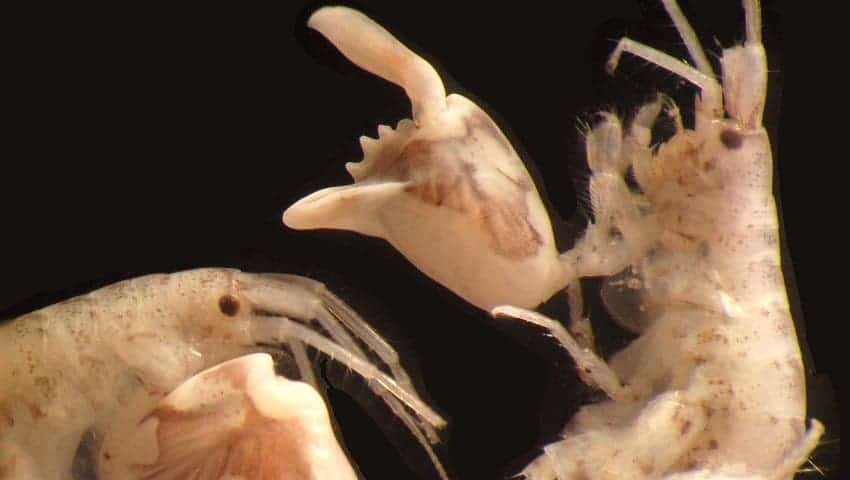
Blink and you’ll miss it is an understatement when dealing with the male amphipod (Dulichiella appendiculata). The shrimp-like creature can snap shut its tiny claws in less than a 10,000th of a second, producing high-energy jets and even causing water bubbles to explode.
Oh, snap!
Amphipods only grow to a few millimeters in length, but don’t let their tiny size fool you. They spend their days foraging in the cool waters of the East Coast for their favorite food, algae and seaweed. But if threatened, the crustacean will use its lightning-fast snapping claws to inflict serious damage — at least for its size.
Some may assume that the fastest motions in nature are performed by larger animals that have enough inertia to produce high acceleration. Surprisingly, the highest accelerations are encountered in the smallest creatures and structures, whether it’s fungus shooting spores or the mandibles of ants.
But even so, it’s astonishing to see the amphipod’s claw snap shut with such phenomenal force seeing how water has a much higher density and viscosity than air. What’s its secret?
Researchers at Duke University used high-speed cameras that shoot 300,000 frames per second to reveal that the amphipod contracts a muscle that cocks back a blade-like appendage known as the dactyl. Once the latch is released, the stored potential energy is rapidly converted into kinetic energy. If you’d like a nifty camera like this, you’ll have to
Usually, this sudden release of energy breaks mechanical components, but the amphipod’s claw remarkably stays intact. That’s even more astonishing considering the snapping motion pushes water at an oblique angle. These water jets cause cavitation — the formation and collapsing of cavities or bubbles in a liquid in a zone of low-pressure.
When these bubbles implode, they blast a lot of energy — and they can be really loud. Cavitation bubbles are the main reason why boat propellers make so much noise, for instance. They’re also responsible for the annoying sound people make when they crack their knuckles and collapse cavitation bubbles in the fluid in the joint.
“They generate audible pops and rapid water jets, which occasionally yield cavitation, and may be used for defense. These amphipod snaps push the boundaries of acceleration and size for repeatable movements, particularly in water, and exemplify how new biomechanical insights can arise from unassuming animals,” the Duke biologists wrote in the journal Current Biology.
So somehow, this resilient amphipod has evolved to withstand not only the motion of the claw itself but also the cavitation bubbles and water displacements it generates.
It’s not alone either. The amphipod joins the snapping shrimp and the mantis shrimp, which both wield similar claws, albeit much larger, that are strong enough to break through shells.
According to the researchers, the claws make up a third of the male amphipod’s mass. It’s not clear at the moment why the crustacean would divert so many resources to this action, but they believe mating or territorial disputes with other males are involved.









